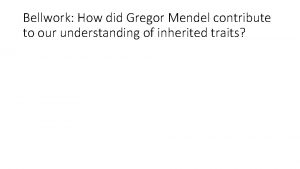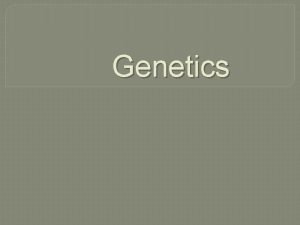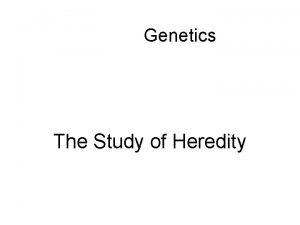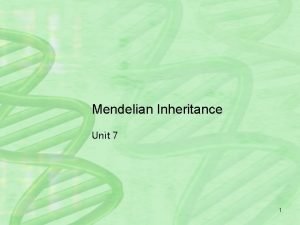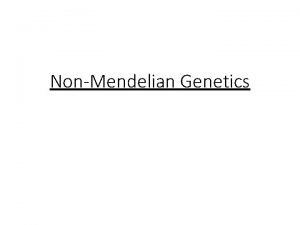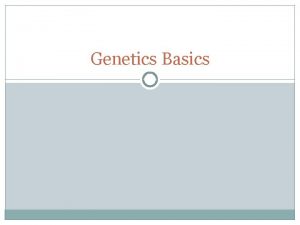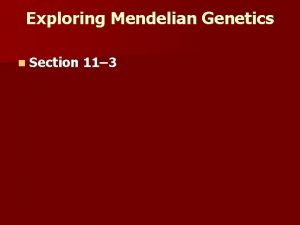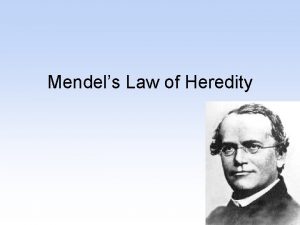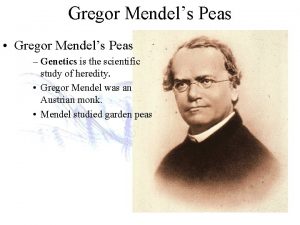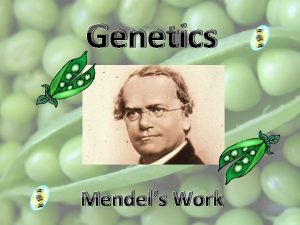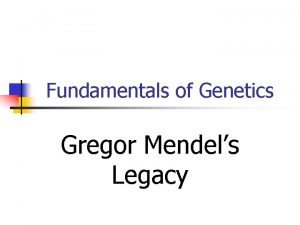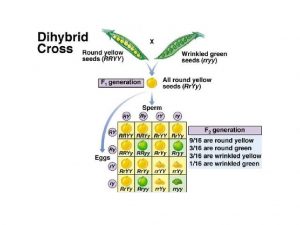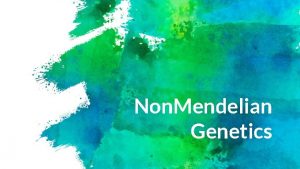Mendelian Genetics Gregor Mendels research Mendel proposed the













- Slides: 13

Mendelian Genetics Gregor Mendel’s research

• Mendel proposed the first theory about the units of inheritance (what we now call genes) and described two fundamental rules governing how traits are inherited. • Mendel’s work is recognized today as one of the greatest breakthroughs in the history of science.

• In one experiment he made a cross between two true-breeding strains, one with wrinkled seeds and another with round seeds. • This is called a monohybrid cross because the two plants involved in the cross differ only in one character (in this case, seed shape).

• The plants involved in the original cross are called the parental or P generation. In this experiment, Mendel found that all the progeny plants, the first filial or F 1 generation, produced only round seeds. The wrinkle trait seemed to have been masked, or “dominated, ” by the round trait in the F 1 seeds.

• Mendel called the round trait dominant and the wrinkled trait recessive. All seven monohybrid crosses behaved in a similar manner; they produced F 1 progeny processing the trait of one of the parents. • Mendel then planted the F 1 seeds for each cross, raised the plants, and allowed them to self pollinate to produce the second filial or F 2 generation. • He found that both dominant and recessive types appeared in the F 2 generation in a numerical ratio of 3 dominant to 1 recessive.

• Mendel proposed that genes exist in different forms and can consequently give different traits. • Today we call different forms of one gene an allele.

Autosomal Dominant • If the trait were dominant, we would use the following designations: A = the trait (a genetic disease or abnormality, dominant) a = normal (recessive)

Autosomal Recessive • If the trait were recessive, we would use the following designations: A = normal (dominant) a = the trait (a genetic disease or abnormality, recessive)

X-linked Recessive • We use the following symbols for X-linked recessive: XA = normal Xa = the trait (a genetic disease or abnormality) Y = Y chromosome (males only)


Rr rr

XA XA XA Xa XA Y Xa Y* * = trait is expressed

Assignment • Pg. 178, Section 1 Review 1 -7 • Due on Wednesday (1/15)
 Gregor mendels principles of genetics apply to
Gregor mendels principles of genetics apply to Gregor mendel a monk
Gregor mendel a monk Chapter 11 biology test
Chapter 11 biology test How did gregor mendel contribute to genetics
How did gregor mendel contribute to genetics Who was mendal
Who was mendal Mendel
Mendel What did gregor mendel research
What did gregor mendel research Who is gregor mendel
Who is gregor mendel Difference between mendelian and non mendelian inheritance
Difference between mendelian and non mendelian inheritance Multiple alleles
Multiple alleles Section 11-5 linkage and gene maps answer key
Section 11-5 linkage and gene maps answer key Introduction to mendelian genetics
Introduction to mendelian genetics Codominant biology definition
Codominant biology definition Section 11-3 exploring mendelian genetics
Section 11-3 exploring mendelian genetics



